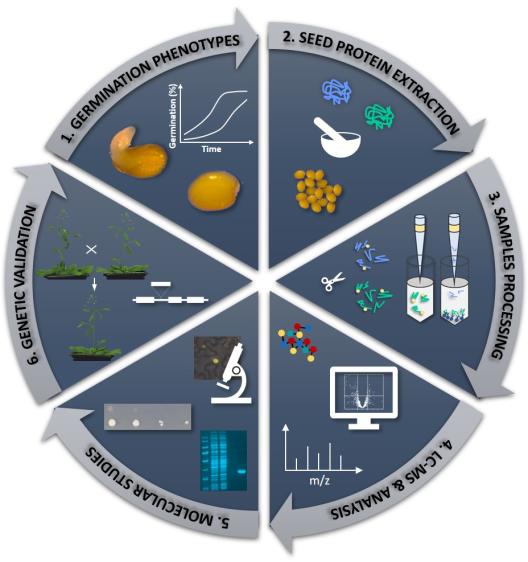
Most plants that currently grow on earth produce seeds. Orthodox seeds are remarkably resistant biological structures that allow plants to disperse their genetic material over long distances and/or time periods. Seed germination time and location determine the environmental conditions that the future plant will encounter during its life and thereby its growth and reproductive success. Most of the human food supply depends directly or indirectly on seeds and germination issues represent a substantial part of agricultural losses. Seed germination time is of crucial importance to food productivity and ecosystem preservation. A precise understanding of seed germination up to the molecular level is a cornerstone for resilience to abiotic stresses, worldwide food security and preservation of biodiversity as climates change.
Seed dormancy is an evolutive and adaptive trait that prevents seed germination during (ephemerally) favourable conditions that ensures both seedling establishment in the proper season and the persistence of the species in the soil seed bank. Germination is an irreversible process ineluctably followed by the loss of the seed protective features. Depending on seed age as well as experienced environmental conditions distinct molecular events occurring in seed lead either to germination or to the maintenance of a biologically quiescent state. The molecular pathways underlying this binary event are far from being understood.
We are investigating the role of protein interactions and post translational modifications in the control of seed dormancy. We combine biochemistry, proteomic, molecular and genetic based methods to identify changes occurring on proteins that govern the fate of a seed after imbibition (see figure 1). Our objective is to contribute in the mapping of molecular pathways specific for seed dormancy to ultimately implement breeding program aiming to modify germination characteristics without impeding other relevant plant fitness traits.
